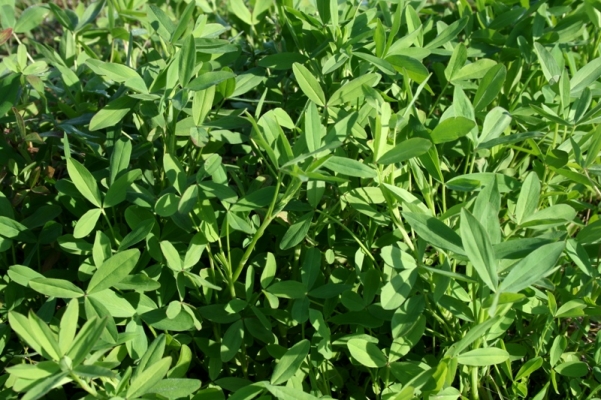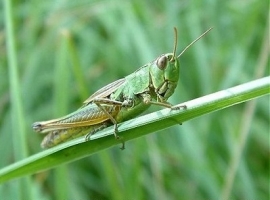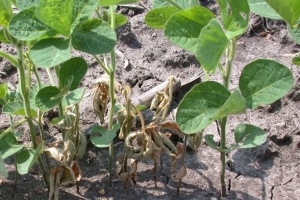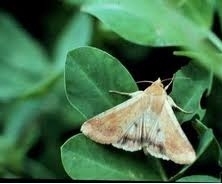Climate
-
Temperature
23-35°C -
Rainfall
550-750mm -
Sowing Temperature
23-30°C -
Harvesting Temperature
30-35°C

















This crop gives best result when grown in medium to heavy soil. It can be grown on sandy loam soil but it requires frequent irrigations. It improves physical, chemical and biological properties of soil and thus improves its fertility status.
Diploid varieties:
Miscavi(1995): Developed by CCS, Hisar. Suitable for cultivation in entire growing areas. Gives 5-6 cuttings. Gives average yield of 300-340qtl/acre.
Khadaravi (1995)
Faili (1995)
Tetraploid varieties:
S-99-1 (Wardan) (1982): Developed by IGFRI, Jhansi. Suitable for cultivation in entire growing areas.
Promising tetraploid varieties are Pusa Giant and T-678.
T-678
T-724
T-560
Other state varieties:
Hisar Berseem 2 (HB 2)
HB 1: Suitable for timely sown irrigated areas. It is resistant to stem and root rot. It gives average yield of 280 qtl/acre.
HFB 600: Developed by CCS, Hisar. Suitable for cultivation in entire growing areas. More profitable than Miscavi variety. Resistant to root and stem rot. It gives average yield of 280-300 qtl/acre of green fodder and 36-40qtl/acre of dried fodder.
BL 22: Developed by PAU, Ludhiana. Suitable for hill areas of north India and sub-temperate region.
BL 180: Developed by PAU, Ludhiana. Suitable for growing areas of north India.
For sowing, use leveled land so that water logging conditions will not appeared during growth period. Carry out planking operation after each ploughing.
Time of sowing
For higher yield, optimum time for Berseem cultivation is from mid-October.
Spacing
Sowing broadcasting method is used.
Sowing Depth
Depending upon weather conditions, broadcast seeds in standing water (water depth 4-5cm). Complete sowing in evening hours.
Method of sowing
Berseem is sown by broadcasting method.
Seed Rate
Use seed free from weeds. Before sowing put seeds in water and remove seeds which float on water. Use seed rate of 10-12 kg seeds.
For getting good yield, mix 750kg of mustard seed along with berseem seeds.
Seed Treatment
Before sowing, treat seeds with Rhizobium culture. Mixed one packet of Rhizobium culture in 10% gur solution and then rub this mixture on seeds. Dry them in shade.
Fertilizer Requirement (kg/acre)
| UREA | SSP | MOP | ZINC |
| 20-25 | 120-150 | # | # |
Nutrient Requirement (kg/acre)
| NITROGEN | PHOSPHORUS | POTASH |
| 8-12 | 20-25 | # |
Apply FYM (Farm Yard Manure) @6-8tonnes/acre and mix well in soil at the time of land preparation or before 20 days of land preparation.
Apply N:P in ratio of 8:20kg in form of Urea@20-25kg and Superphosphate@120-150kg per acre at sowing time.
First irrigation is important, apply it within 3 to 5 days in light soil and 8-10 days in heavy soils. Remaining irrigation should be applied at 8-10 days interval in summer and 10-15 days during winter.
Bueen is serious weeds of berseem crop. To control this weed before sowing, spray Fluchloralin@400ml/200Ltrs of water per acre on seed bed.

Grass hopper: It damage crop by eating leaves. It occurred mostly in May-June month. If infestation is observed, spray crop with Malathion 50 EC @ 500 ml in 80-100 Ltr of water per acre. After spraying do not feed cattles for seven days.

Stem Rot: It is seed borne disease. It causes rotting of stem near soil surface. White fungus growth is observed on nearby soil.
Remove and destroyed affected plants. Take spray of Carbendazim @ 400 gm in 200 Ltrs of water per acre.

Gram Caterpillar: Avoid raising of crop nearby tomato, gram, late sown wheat. If infestation is observed spray with Chlorantraniliprole 18.5 SL @ 50 ml or Spinosad 48 SC @ 60 ml per acre in 80-100 Ltr water with help of knapsack sprayer.
Crop is ready to harvest 50 days after sowing. After then take cutting with 40 days interval in winter and 30 days interval in spring. Berseem can be mixed with 20% ground maize to provide high quality silage.
Berseem is a fast growing, high quality forage that is mainly cut and fed as green chopped forage. Berseem is a great nutritious and delicious green fodder for animals, especially for milk giving animals. This crop enhances the fertility of the land as well as providing more quantity of green fodder by 6 cuttings from October to May. It also improves alkaline and saline soil. Flowers are yellowish-white in color. Berseem can be sown alone or in combination with other species. It is mixed with grass (ryegrass) or with a winter cereal crop such as oats to make high quality silage.
You have successfully login.
Your email and password is incorrect!